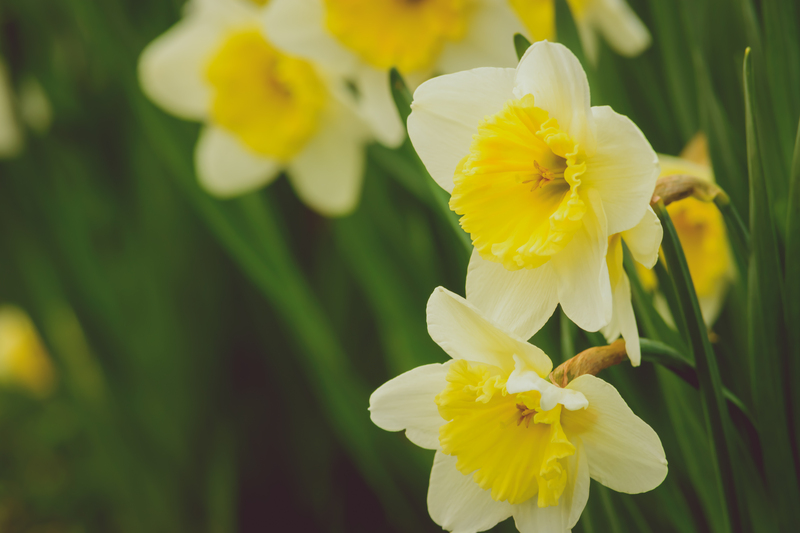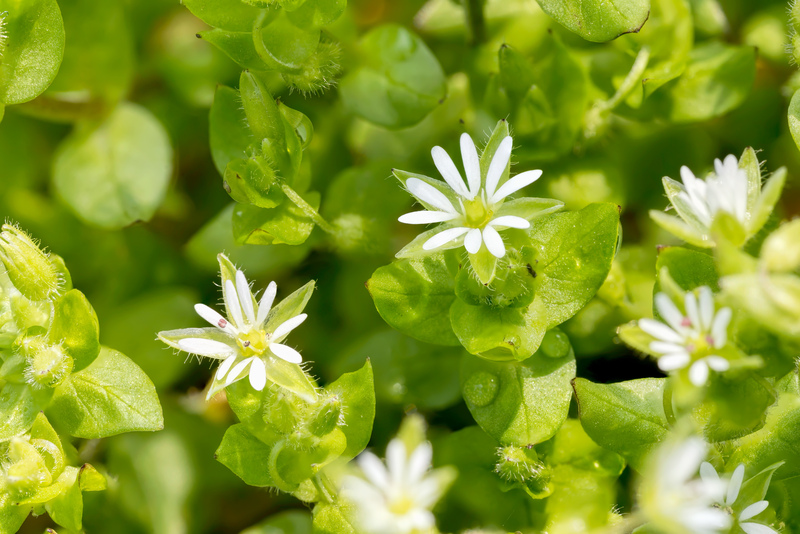Exploring Artistic Hedge Trimming: Discover Unique Shapes and Techniques
Posted on 22/06/2025
Exploring Artistic Hedge Trimming: Discover Unique Shapes and Techniques
Artistic hedge trimming has emerged over centuries as an inspiring horticultural craft that transforms functional garden boundaries into breathtaking works of living art. This fusion of landscaping and sculpture--commonly called topiary art--enables both professional gardeners and passionate hobbyists to unleash their creativity, making gardens a true extension of personal and cultural expression. In this detailed guide, we'll dive deep into the world of hedge artistry, explore the most unique hedge shapes, and reveal innovative hedge trimming techniques for all skill levels.

History of Artistic Hedge Trimming
The roots of artistic hedge shaping reach back to ancient Rome, where grand villas boasted meticulously pruned foliage. By the Renaissance, topiary became the hallmark of European gardens, especially in England, France, and Italy.
Not only did aristocrats commission elaborate designs for show and status, but Asian cultures--most notably Japan with its Zen gardens--also advanced hedge craft techniques focused on balance and tranquility.
- Classical Era: Topiary symbols, animal forms, spirals.
- Victorian Era: Highly ornamented mazes, knots, and geometric displays.
- Modern Period: Abstract designs, whimsical forms, and even living sculptures as public art.
Types of Artistic Hedge Shapes
When you delve into the world of unique hedge shaping, you'll find that the possibilities are nearly infinite. From elegant geometric patterns to playful animal figures and imaginative abstract forms, there's a design for every aesthetic vision. Below, we outline the most popular and creative options:
1. Geometric Hedge Designs
Geometric shapes form the foundation of classic artistic hedge trimming. Crisp lines and precise angles evoke a sense of order and sophistication.
- Spheres, cubes, and rectangles: Often used in formal gardens and period estates for their symmetry.
- Pyramids: Add vertical emphasis and drama.
- Cones and spirals: Dynamic, eye-catching, and a favorite for flanking entrances or lining walkways.
2. Animal Figures (Topiary Animals)
Turning a hedge into a recognizable creature is the height of topiary artistry. Whether it's a proud peacock, a playful bunny, or a stately lion, animal forms captivate children and adults alike.
- Birds: Swans, peacocks, and storks are popular picks for larger spaces.
- Mammals: Rabbits, elephants, dolphins, and even mythical creatures such as unicorns!
Such designs are often the centerpiece of both private and public gardens.
3. Themed and Abstract Creations
Contemporary hedge trimming art often goes beyond traditional motifs, venturing into the realm of abstraction and narrative themes. This might include:
- Waves and clouds: Evoke the beauty of nature with undulating shapes.
- Maze patterns: Both functional and decorative, they create intrigue and offer a playful challenge.
- Alphabets and symbols: Personalize your garden with initials, hearts, or custom logos.
- Fantasy scenes: Narratives such as fairy-tale castles or storybook landscapes come to life.
Essential Tools for Artistic Hedge Trimming
Successful hedge art requires more than just imagination--it demands the right set of tools for precision and ease. Here's what you'll need to get started:
- Hand Shears: For detailed work and finishing touches.
- Electric or Battery Hedge Trimmers: Ideal for shaping larger areas quickly.
- Long-Handled Pruners: Reach tall or deep sections of dense hedges.
- Secateurs: Small hand pruners for snipping fine twigs and stems.
- Shaping Frames or Wire Forms: Serve as guides for animals, spirals, and spherical shapes.
- Chalk or String: Mark outlines or guidelines, ensuring your design stays true.
- Ladders and Safety Gear: For complex or high-reaching topiaries, always prioritize safety!
Pro Tips:
- Keep your blades sharp--clean cuts heal faster and promote healthier growth.
- Sanitize tools to prevent plant diseases.
- Invest in lightweight gear if working for extended periods.
Step-by-Step Artistic Hedge Shaping Techniques
While artistic hedge trimming looks intricate, anyone can achieve impressive results by mastering a few essential techniques. Here's a step-by-step breakdown:
1. Selecting the Right Hedge Plants
Not all plants are suitable for topiary art. Ideally, choose species with dense, small leaves and supple stems. Common favorites include:
- Buxus (Boxwood): The gold standard for detailed designs and small gardens.
- Yew (Taxus): Slow-growing and long-lived; ideal for grand forms.
- Privet (Ligustrum): Fast-growing and forgiving of regular clipping.
- Holly, Myrtle, and Japanese Holly: Also make excellent dense hedges.
2. Planning Your Design
- Start with sketches: Draw your intended shape from various angles.
- Use a frame or wire guide for complex forms.
- Visualize the finished scale--remember plants will grow and fill out.
- Mark the hedge: Use chalk lines or string to give yourself clear cutting guides.
3. Rough Shaping
- Begin with coarse trimming, cutting away excess growth outside your basic form.
- Work from the base upward to avoid damaging lower foliage with falling clippings.
- Step back regularly to check for symmetry and adjust as needed.
4. Detailed Carving
- Switch to hand shears and secateurs for precise trimming and detail work.
- Take your time--gradually reveal the final contours, refining curves and edges.
- For intricate shapes, like animal features, proceed in small increments for control.
5. Regular Maintenance
- Keep your unique hedge sculpture healthy and crisp with light trims every 6-8 weeks during growing season.
- Water, fertilize, and watch for pests--lush, healthy foliage responds better to reshaping.
- Revisit your design annually to tweak, update, or expand as you gain confidence and inspiration.
Advanced Hedge Trimming Techniques
Cloud Pruning (Niwaki)
A traditional Japanese technique (niwaki) transforms shrubs into tiered "clouds," evoking a sense of tranquility. This style emphasizes open spaces and sculptural elegance over dense, blocky forms. Cloud pruning requires patience and a keen eye for abstract balance.
Espalier and Pleaching
- Espalier: Trains hedges or trees flat against a wall or trellis, forming distinct geometric patterns, hearts, or even words.
- Pleaching: Involves interlacing branches of neighboring hedge plants to create living fences, tunnels, or arches.
3D Sculptures and Living Arches
- Topiary sculptures: For advanced practitioners, sculpting multiple plants together (or even integrating wire frames and moss) can yield full 3D statues.
- Living tunnels/arbors: Interwoven tops of hedges create enchanting passageways, perfect for whimsical gardens.
Benefits of Artistic Hedge Trimming
Why embrace this living art form? Beyond pure aesthetics, unique hedge trimming offers several practical and environmental rewards:
- Enhanced curb appeal: Distinctive shapes set your property apart and may even boost real estate value.
- Year-round interest: Evergreen topiary ensures your garden looks lively even in winter months.
- Wildlife habitats: Dense hedges offer refuge for birds, pollinators, and small mammals.
- Therapeutic activity: The creative, hands-on process is meditative and rewarding.
- Personal expression: Let your personality or cultural heritage flourish in your landscape.
Common Artistic Hedge Trimming Mistakes (and How to Avoid Them)
- Over-trimming: Cutting too aggressively can stress plants and lead to sparse growth. Always remove less than you think is needed.
- Neglecting plant health: Unhealthy hedges rarely form sharp lines or intricate details. Prioritize watering and pest management.
- Skipping regular maintenance: Allowing your shape to overgrow invites mistakes. Little, frequent trims are key.
- Poor planning: Without a design or guide, results may be lopsided or unrecognizable.
- Wrong plant choice: Fast-growing or loose-leaved species make for blurry, unsatisfying shapes.
Inspiring Examples of Artistic Hedges Around the World
Levens Hall, England
Home to the world's oldest and most famous topiary gardens, Levens Hall showcases an array of surreal geometric and animal forms, meticulously maintained for over three centuries. These living sculptures prove the timeless magic of artistic hedge shaping.
Chateau de Villandry, France
The legendary ornamental gardens of this French chateau feature intricate knot work, hearts, spirals, and labyrinths--demonstrating how unique hedge trimming is woven into the fabric of French landscape artistry.
Private Masterpieces
Across suburban neighborhoods and city parks worldwide, enterprising gardeners craft everything from topiary dinosaurs to Alice-in-Wonderland tea party scenes--blurring the line between gardening and sculpture art.

Getting Started with Artistic Hedge Trimming: Practical Tips for Beginners
- Start Small: Begin with a simple geometric shape (like a globe or cube) to master basic techniques before advancing to animals or abstract designs.
- Visit Gardens and Research Online: Study topiary art at local botanical gardens or browse inspiration galleries for new ideas.
- Join a Community: Many regions have gardening clubs or online forums devoted to hedge artistry.
- Be Patient: Remember--topiary is a slow art. Even professionals revisit sculptures over multiple seasons.
- Document Your Progress: Photograph your projects to track improvement and show off your living masterpieces!
Conclusion: Embrace Living Art Through Artistic Hedge Trimming
Artistic hedge trimming offers an endlessly creative outlet for expressing style, whimsy, and elegance in any size garden. Whether you dream of a classic spiral, a fanciful animal, or a jaw-dropping fantasy scene, the only limits are patience, plant health, and your imagination. With a little planning, the right tools, and regular care, anyone can transform shrubs into living sculptures that delight for years to come.
Ready to get started? Pick up your shears, sketch out a design, and embark on your own journey exploring the world of unique artistic hedge trimming techniques!

